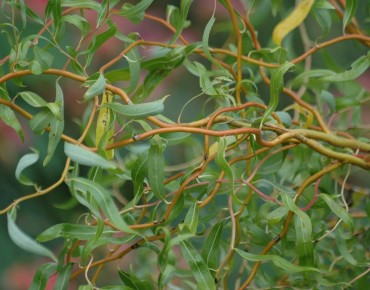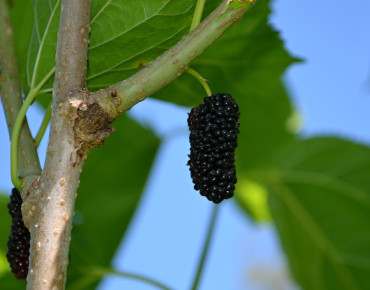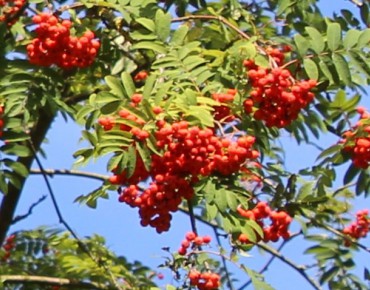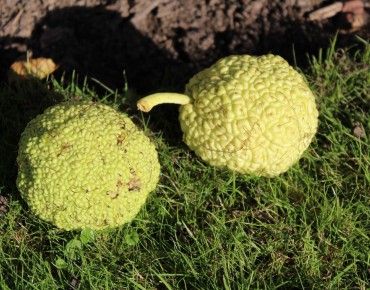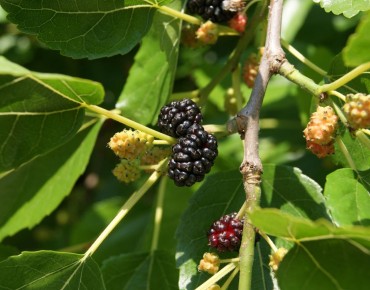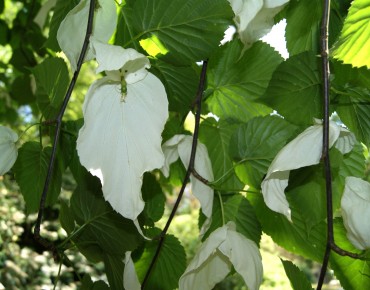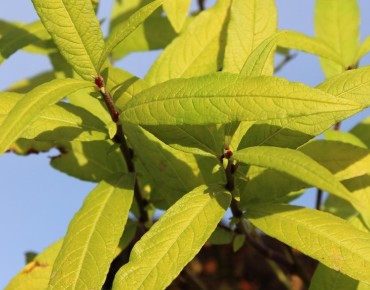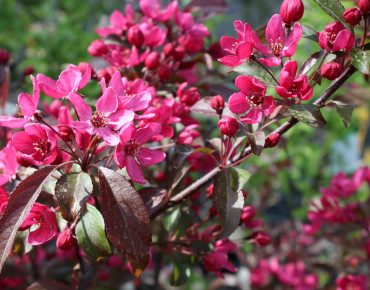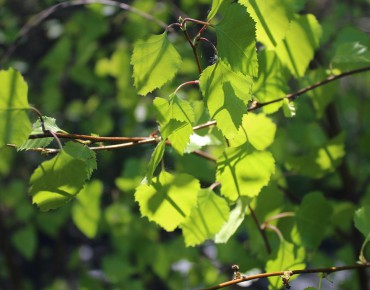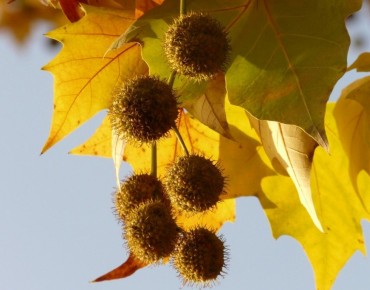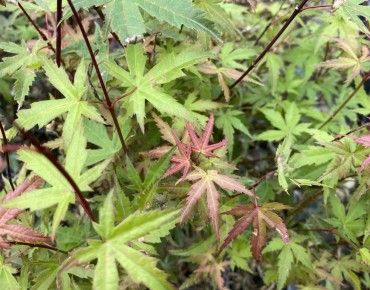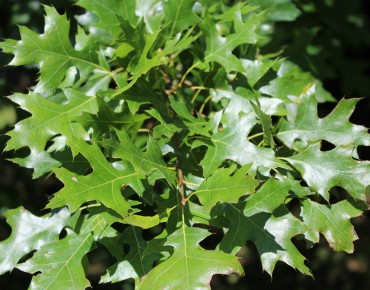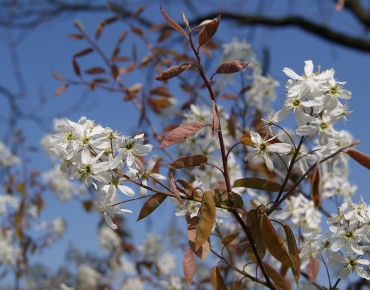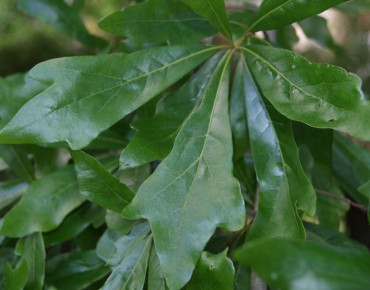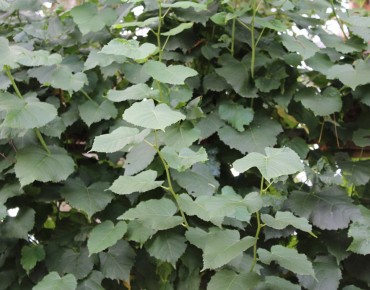Aspen
Populus tremula
Description
Aspen – Populus tremula
Main interest
The Aspen, or Populus tremula, is a deciduous tree from the willow family (Salicaceae), known for its delicate foliage that trembles at the slightest breeze. This fluttering effect is due to its flattened petioles, giving the tree a constant, animated look that adds a lively touch to natural landscapes. It is a fast-growing pioneer species, ideal for colonising open land and supporting natural regeneration. Its remarkable hardiness makes it suitable for cold climates. It is ecologically important, providing food and shelter to many insects and birds. Its smooth, pale bark and graceful silhouette make it a discreet but elegant addition to wild or informal gardens. Its light wood has historically been used in carpentry, carving, and paper production. It also has traditional medicinal uses, thanks to its bark rich in salicin, a natural anti-inflammatory compound.
Origin and characteristics
Geographical origin: Temperate Eurasia, from northern Spain to Siberia and Central Asia.
Botanical family: Salicaceae
Notable facts: Very tolerant pioneer species. The name “aspen” refers to the trembling of the leaves. Medicinal use of bark dates back centuries for fever and pain relief.
Description and details
Mature height: 15 to 25 metres.
Mature spread: 8 to 12 metres.
Growth habit: Upright to oval, broadening with age.
Bark: Smooth, silvery grey when young, becoming fissured with age and marked with dark lenticels.
Leaves: Rounded, finely toothed, light green turning golden yellow in autumn. The flattened petioles cause continuous fluttering.
Growth rate: Fast, up to 1.5 metres per year.
Hardiness: Excellent, down to -35°C.
Flowering and fruiting
Flowering time: March to April, before leaf emergence.
Flower description: Hanging catkins, reddish on male trees and greenish on female ones. Species is dioecious.
Fruits: Elongated capsules filled with cottony seeds dispersed by wind.
Wildlife value: Not strongly nectar-producing, but valuable for insects and nesting birds.
Light and soil
Ideal exposure: Full sun, tolerates partial shade but performs best with full light.
Soil type: Prefers fresh, light, slightly acidic to neutral soil, but highly adaptable.
Planting
Soil preparation tips: Loosen soil to 50 cm depth, add mature compost if poor, or sand if too heavy.
Spacing: 5 to 7 metres depending on layout (groves, informal hedge, alignment).
Soil nature: Light, humus-rich to clay, slightly acidic to neutral, not too dry or calcareous.
Watering
At planting: Regular watering the first year to ensure establishment.
At maturity: Quite drought-tolerant, though it prefers slightly moist soils.
Pruning
When and how: Not essential. Prune in late winter to remove dead or misdirected branches. Avoid heavy pruning that stimulates suckering. Can be coppiced.
Propagation
Methods: Root suckers, root cuttings, seed (rarely used in nurseries).
Garden use
Ideal placement: Back of the garden, natural hedges, woodland edges, embankments, or wild areas.
Recommended plant companions: Birches, dogwoods, hazel, hawthorn, rowan.
Traditional uses
Cultural and historical uses: Wood used for matches, clogs, carving, and veneer. Bark used medicinally to treat fever and inflammation.
Pests and diseases
Potential issues: Bacterial canker, root rot, aphids, sawflies.
Natural prevention: Diversify plantings, ensure good air circulation, encourage beneficial wildlife.
Growing tips
Practical advice: Plant in full sun, with space to grow. Avoid harsh pruning. Combine with native species for natural integration.
Summary
The aspen is a graceful, resilient tree perfect for ecological gardens. Its trembling leaves, fast growth, and high wildlife value make it an ideal choice for wild hedges and rewilding.
Populus tremula, commonly known as the aspen, is a deciduous tree native to temperate Eurasia. It is easily recognised by its fluttering leaves, which move constantly in the wind. This fast-growing and very hardy species is ideal for cold climates and for restoring degraded landscapes. Its roots spread via suckers, making it a valuable pioneer species in natural regeneration. Aspen trees offer excellent ecological value, attracting insects, birds and mammals. The light wood has been used in crafts and paper-making, while its bark has long been valued for its medicinal properties. In gardens, the aspen requires little care. A sunny location and well-prepared soil are enough to ensure successful growth. Its elegant appearance and ecological benefits make it ideal for natural hedges, wild gardens or large informal spaces. Withstanding temperatures as low as -35°C, it is an excellent solution for biodiversity and climate-resilient landscaping.
Features
- Common name : Aspen
- Family : Salicaceae
- Category : tree
- Spread : 8 to 12 m
- Foliage : deciduous
- Use : isolated - shrubberry - alignment
- Soil : neutral to acid
- Habit : conical
- Growth : Fast
- Enemies : aphid
- Possible diseases : Bacterial canker, root rot. Not very susceptible to rust.
- Reproduction : dioecious
Expédition & livraison
How does the delivery work?
 As soon as you place your order your plants are selected
As soon as you place your order your plants are selected Each order is processed individually.
Each order is processed individually. Plants are packed, staked and labeled.
Plants are packed, staked and labeled. Packaging is carefully implemented to avoid any problems.
Packaging is carefully implemented to avoid any problems. Packages are ready to be shipped.
Packages are ready to be shipped.
Our delivery methods
Shipping of our plants throughout Europe (except overseas and islands).
Customer reviews








